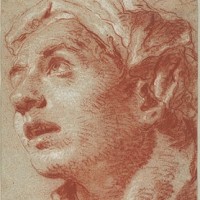Reviewed: The Cambridge Companion to American Poetry Since 1945

Reviewed: The Cambridge Companion to American Poetry Since 1945 by Jennifer Ashton (ed.). CUP, 2013. ISBN 978-0-521-14795-9.
I’ve had reservations about the Cambridge series ever since reading their Companion to Heidegger, which I ploughed through carefully, cover to cover, over the course of a quiet writers’ conference some years ago – without finding a single thing worth noting. Indeed I wondered whether its contributors, all worthy academics, had actually read Heidegger. The contributors to American Poetry are also academics, well qualified in their fields, but here providing much more detailed and useful information. It may help to first list the chapters and their contents:
1. Jennifer Ashton: Summary of contributions.
2. Mark Scroggins: Objectivists and Projective verse.
3. Deborah Nelson: Confessional Poetry.
4. Charles Altieri: Poetry and the New York School School of painting.
5. Michael Davidson: San Francisco scene.
6. Ronna C. Johnson: Beat poets.
7. Margo Natalie Crawford: Black Arts Movement.
8. Lisa Sewell: Feminist poetries.
9. Nick Selby: Environmental poetry.
10. Steve McCaffery: Language Poetry,
11. Hank Lazer: Poetry and the academic establishment.
12. Christine Pugh: Mainstream lyric poetry.
13. Orn Izenberg: Allan Grossman and Susan Howe.
14. Michael W. Clune: Rap, hip hop and slam poetry.
15. Jennifer Ashton: Looking ahead.
Firstly, we should note that the book is not about American poets over the last seventy years but about what is distinctive about American poetry over that period. Or what the contributors consider is distinctively American, which is largely the non-traditional. Many good poets are therefore excluded.
Secondly, there is little or no evaluation of the poetry as poetry: the authors are more concerned with social and political backgrounds, the prevailing aesthetics, and the manifestos of the poets themselves. The quotations are short, designed to illustrate the larger picture, and are commonly not very good poems: the book will make few converts from the newcomer to these styles.
Thirdly, the contributions are closely referenced, and the further reading suggestions excellent.
Fourthly, a very useful timeline of poetry publications and events precedes the contributions.
Fifthly, the language is diffuse in the usual academic way, but not over-difficult. A fair sample may be from Christina Pugh’s article, where distinctions are flagged but not followed up:
Abram’s first sentence first suggests the time-honored dramatic monologue or persona poem, in which a historical persona or created character is made to speak; such “mainstream” poets as Bidart and Ai are still profitably engaging this lyric subgenre. Yet the final point of this passage is even more instructive for our purposes: while material in poems may surely be taken from actual “experience” – after all, even at this moment of Flarf and Google-induced poetry, persons are still the ones doing the writing – such experience must be subordinate to, and transformed by poetic structure. (17) “Personal expression” is therefore not commensurate with what Abrams calls the “personal lyric” (pace Abrams himself).
I found Hank Lazer’s statistics especially valuable, though they rather underlined the melancholy conclusions given elsewhere on this site. Steve McCaffery explores the political background to language poetry, and refers to more poets than are listed in the language poetry webpage on this site. The contributions on Black poetry, environmental poetry and feminist poetries are detailed, and cover areas missing from TextEtc, though I will try to mend matters in the next few months. The similarities between Jackson Pollock and poetic surrealism are examined in Charles Altieri’s essay, which compares the fluid syntax in the work of Frank O’Hara, John Ashbery and Barbara Guest with the characteristics of the New York school of painting. Debora Nelson’s essay on confessional poetry casts the net wider: we have Lowell and Plath but also John Berryman, Anne Sexton, Alan Ginsberg, Frank O’Hara and W.D. Snodgrass. Again the survey includes the social and political background, notably Cold War anxieties and the battle for privacy. Michael Clune links Rap, Hip Hop and Slam poetry with audience participation and theatrical visibility. Mark Scroggins traces the careers of Zukofsky and Olson, their poetic creeds and the artistic environment of the times.
The book will be useful to those new to American poetry, providing them with a good survey of the more radical thought of the period and a list of poets to follow up. Otherwise, it’s an honest, perceptive but perhaps rather disappointing collection of essays. The real focus is on the search (and need) for an alternative aesthetic in American poetry, one independent of literary quality at times, to judge from quotations, which a traditional poetry critic would probably call pretentious banality. There are better poems than these.
Ashton’s concluding words are:
The force of the work is to remind us that neither it (i.e. poetry) nor the world it inhabits can be altered by our responses to it or by its effects on us – by, say, our feeling “complete”; they can only be altered by a change to their form. In this respect, we may well have arrived at a crucial dialectical shift in the social and aesthetic history of poetry: a new modernism: post-postmodernism.
Personally, I doubt that is case, or that the new strand of what is already a minority interest, will prove any more unifying, stimulating or popular. But the authors obviously see matters differently, and their perspective may help the appreciation of poetry currently being published by the small presses.

Guess that means three stars on the Amazon system.
Anyone know of a better coverage of the period?